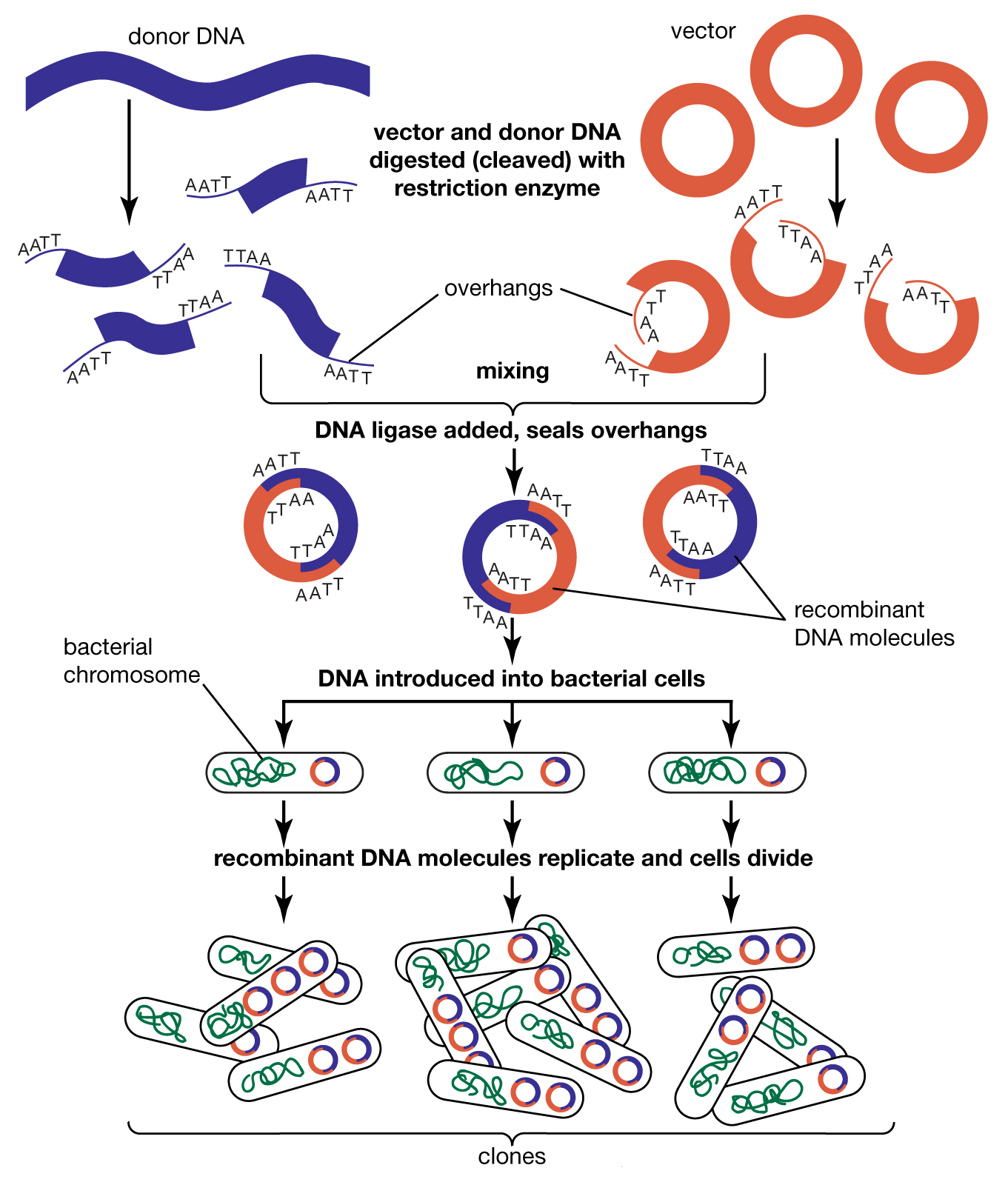
Write diagrammatic representation of recombinant DNA technology.
Answer
405.6k+ views
1 likes
Hint: Recombinant DNA technology is a branch of molecular biology that deals with expressing a particular gene in a specific host, most commonly E. coli, and extracting the required protein from the host cells. Restriction enzymes, vectors, the gene of interest, the host cell, and other components are used in this procedure.
Recombinant DNA technology is a well-known molecular biology process that involves a number of steps to produce the desired protein from a gene of interest.
Complete answer:
Recombinant DNA Technology is a method for creating artificial DNA by combining genetic resources (DNA) from various sources. Genetic engineering is the term for recombinant DNA technology.
Tools of recombinant DNA technology:
- Isolation of DNA is the first step.
- The use of restriction endonucleases to fragment DNA.
- The desired DNA fragment is isolated.
- The gene of interest is amplified.
- Using DNA ligase, ligate the DNA fragment into a vector.
- Recombination DNA transfer into the host, among other things.
Process:
- Isolation of Genetic Material.
- Cutting the gene at the recognition sites.
- Polymerase chain reaction (PCR) amplifies gene copies (PCR).
- Ligation of DNA Molecules.
- Insertion of Recombinant DNA Into Host.
Diagram representation is shown below:

Note:
Applications of recombinant DNA technology:
- The presence of HIV in a person can also be detected using DNA technologies.
- Gene Therapy is a method of attempting to fix gene abnormalities that cause hereditary disorders.
- Clinical diagnostic: ELISA is an example of where recombinant proteins are used in clinical diagnosis.
- Insulin is made using recombinant DNA technology in the pharmaceutical industry.
Recombinant DNA technology is a well-known molecular biology process that involves a number of steps to produce the desired protein from a gene of interest.
Complete answer:
Recombinant DNA Technology is a method for creating artificial DNA by combining genetic resources (DNA) from various sources. Genetic engineering is the term for recombinant DNA technology.
Tools of recombinant DNA technology:
- Isolation of DNA is the first step.
- The use of restriction endonucleases to fragment DNA.
- The desired DNA fragment is isolated.
- The gene of interest is amplified.
- Using DNA ligase, ligate the DNA fragment into a vector.
- Recombination DNA transfer into the host, among other things.
Process:
- Isolation of Genetic Material.
- Cutting the gene at the recognition sites.
- Polymerase chain reaction (PCR) amplifies gene copies (PCR).
- Ligation of DNA Molecules.
- Insertion of Recombinant DNA Into Host.
Diagram representation is shown below:

Note:
Applications of recombinant DNA technology:
- The presence of HIV in a person can also be detected using DNA technologies.
- Gene Therapy is a method of attempting to fix gene abnormalities that cause hereditary disorders.
- Clinical diagnostic: ELISA is an example of where recombinant proteins are used in clinical diagnosis.
- Insulin is made using recombinant DNA technology in the pharmaceutical industry.
Recently Updated Pages
Master Class 9 General Knowledge: Engaging Questions & Answers for Success

Master Class 9 English: Engaging Questions & Answers for Success

Master Class 9 Science: Engaging Questions & Answers for Success

Master Class 9 Social Science: Engaging Questions & Answers for Success

Master Class 9 Maths: Engaging Questions & Answers for Success

Class 9 Question and Answer - Your Ultimate Solutions Guide

Trending doubts
Give 10 examples of unisexual and bisexual flowers

Draw a labelled sketch of the human eye class 12 physics CBSE

Differentiate between homogeneous and heterogeneous class 12 chemistry CBSE

Differentiate between insitu conservation and exsitu class 12 biology CBSE

What are the major means of transport Explain each class 12 social science CBSE

a Tabulate the differences in the characteristics of class 12 chemistry CBSE




